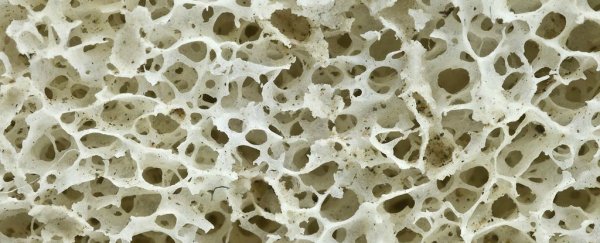For the first time, researchers have created a 'smart' fabric that mimics a type of special human tissue called the periosteum.
It's hoped that this kind of fabric could be used to create anything from protective suits that stiffen on impact, to biological tissues that could replace and repair joints in the future.
The periosteum is a membrane that covers all our bones, with the exception of our joints, and has some pretty special properties.
"[T]he periosteum … comprises an inherently 'smart' material that gives hard bones added strength under high impact loads," the team from the University of New South Wales (UNSW) in Australia explains.
Using a special 3D imaging system, the team was able to map the tissue's architecture, scale up the key components, and produce prototypes of the new smart fabric.
"We then tested the feasibility of rendering periosteum's natural tissue weaves using computer-aided design software," said team leader, Knothe Tate.
The team made the fabric out of a combination of collagen and elastin – both important proteins in biological tissue. But there was a problem.
"The challenge with using collagen and elastin is their fibres, that are too small to fit into the loom. So we used elastic material that mimics elastin and silk that mimics collagen," said Tate.
"The result is a series of textile swatch prototypes that mimic periosteum's smart stress-strain properties."
The UNSW team says this process, including computer modelling and scaling up the key components, could be used to create even more materials with completely different components.
"We have also demonstrated the feasibility of using this technique to test other fibres to produce a whole range of new textiles," said Tate.
For example, one tyremaker believes a titanium version could be used to create thinner and stronger steel-belt radial tires.
But the really exciting use is the biological application that the researchers are now looking into themselves:
"Our longer term goal is to weave biological tissues – essentially human body parts – in the lab to replace and repair our failing joints that reflect the biology, architecture and mechanical properties of the periosteum," said one of the researchers, Joanna Ng.
Although that might be a while away yet, this new smart fabric is promising, and we're looking forward to seeing what the team does next.
The research has been published in Scientific Reports.
UNSW Engineering is a sponsor of ScienceAlert. Find out more about their world changing research.
